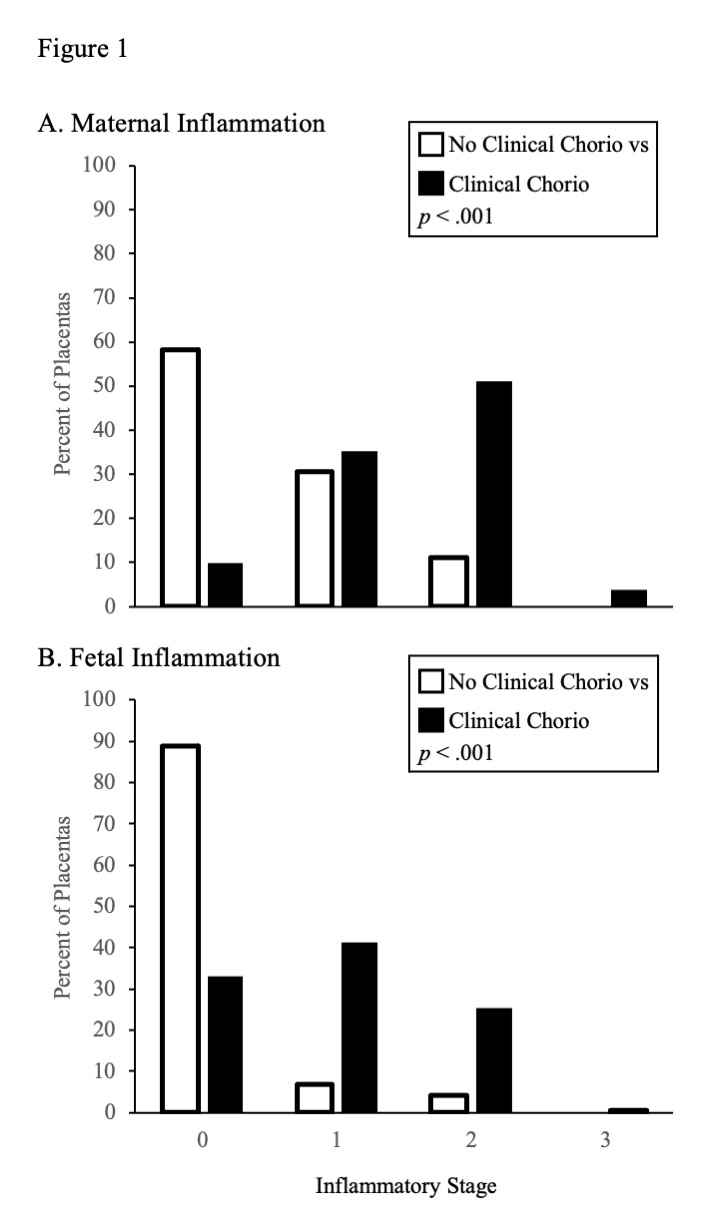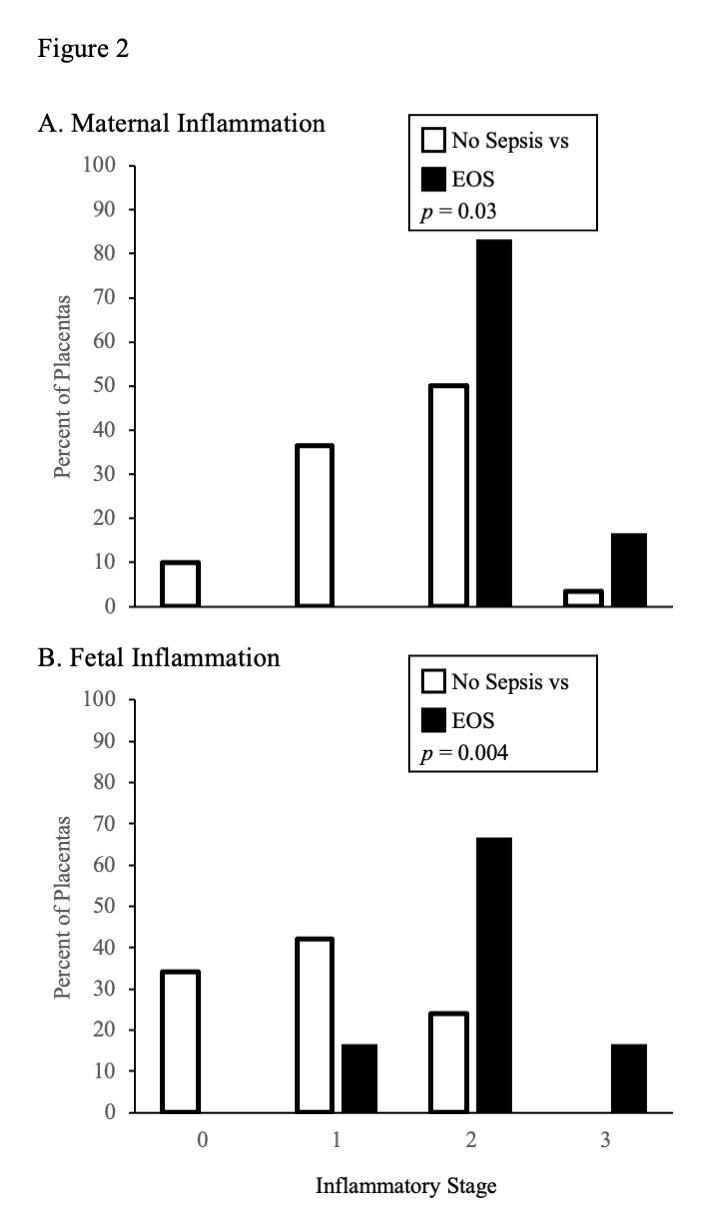Neonatal General
Neonatal General 5: COVID, Infections Diseases
697 - The Stage of Placental Inflammation Is Associated with Early Onset Sepsis and Maternal Clinical Chorioamnionitis in Full Term Neonates
Publication Number: 697.233
- JM
Jessica Messier, MD, PhD (she/her/hers)
Pediatrics Resident
University of Pittsburgh Medical Center
Pittsburgh, Pennsylvania, United States
Presenting Author(s)
Background:
Clinical chorioamnionitis (CC; maternal fever, maternal and fetal tachycardia, purulent amnionic fluid, and/or uterine tenderness) has a high specificity, but low sensitivity for predicting histologic placental inflammation (PI). In preterm infants, there is a well-known association between both CC, PI, and early onset sepsis (EOS). Less is known about the effect of both CC and PI on full term infants.
Objective:
Our objective was to elucidate the relationship between CC, maternal and fetal PI, and EOS in full term neonates.
Design/Methods:
We performed a retrospective electronic medical record review of full term infants born to mothers with (+CC, N=184) and without (-CC, N=72) CC whose placentas were sent for pathology from 2/2021-12/2021 at Magee Women’s Hospital. PI was staged by Redline criteria. EOS was defined as bacterial isolation from cord and/or infant blood and antibiotic treatment for ≥7days. Data were analyzed (Minitab 18.1) using T-tests, Kruskal-Wallis, or Chi-square as appropriate.
Results:
+CC and -CC cohorts had similar mode of delivery, birth weight, and sex. There was a statistical, but not clinically relevant, difference in GA (med[Q1-Q2], +CC: 39.6wk [39.0-40.4] vs -CC 39.1 [38.3-39.7], p< .001). A diagnosis of +CC had a sensitivity of 68.4% and specificity of 85.6% for predicting any amount of PI. Placentas from +CC and -CC showed both maternal (90.2% vs 41.7%) and fetal (67% vs 11.1%) inflammation. Higher stages of maternal and fetal inflammation were found for +CC compared to -CC (Fig. 1, p< .001 & p< .001, respectively). All cases of EOS were from the +CC group. Furthermore, within the +CC group, infants with EOS had higher maternal and fetal inflammatory stages compared to those infants without sepsis (Fig. 2, p=0.03 & p=0.004, respectively).
Conclusion(s):
Maternal and fetal inflammation are found in placentas of full term infants both with and without CC, but, as expected, the maternal and fetal inflammation is more severe in the +CC group. All infants with EOS were in the +CC group and showed the highest stage of both maternal and fetal inflammation. Given this finding, rapid histologic analysis might be useful in selecting which infants should be started on antibiotics.


